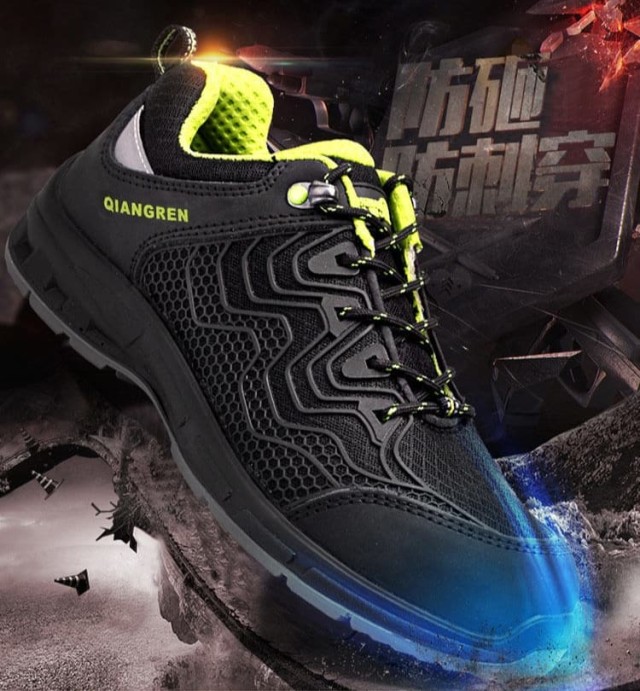Finding the right safety toe isn't just about meeting workplace requirements—it's about balancing protection with all-day comfort. Whether you're navigating construction sites, warehouse floors, or electrical hazard zones, your footwear impacts both safety and productivity. Let’s break down the key factors to help you make an informed decision.
Foot Protection Decoded
Impact Resistance vs. Compression Protection
Safety toes primarily defend against two threats: crushing forces (compression) and falling objects (impact).
- Steel toes excel in compression resistance, handling forces exceeding 3.5 tons—well above the ASTM F2413-18 standard of 2,500 pounds. Their metallic structure distributes weight evenly, making them ideal for heavy industrial environments.
- Composite toes (made from materials like carbon fiber or Kevlar) meet the same ASTM standards but often require thicker designs. Advances in material science, however, allow modern composites to rival steel’s protection without added bulk.
Key Takeaway: Steel is the go-to for extreme compression risks, while composites offer comparable protection with weight and thermal advantages.
The Hidden Weight Penalty of Safety
A steel toe cap can add ~30% more weight than a composite counterpart. This difference matters for:
- Fatigue: Workers walking 10,000+ steps daily may experience less leg strain with lighter composites.
- Mobility: Composite toes allow for a more flexible toe box, beneficial for tasks requiring crouching or ladder climbing.
Industry-Specific Footwear Demands
Construction Site Essentials
- Steel toes dominate here, as rebar, heavy tools, and equipment demand maximum compression protection.
- Look for puncture-resistant soles (ASTM F2413-rated) to guard against nails or sharp debris.
Warehouse Logistics Considerations
- Composite toes shine in high-movement roles—think forklift operators or pickers—where lightweight design reduces fatigue.
- Prioritize slip-resistant outsoles for polished concrete floors.
Electrical Hazard Environments
- Non-metallic composites are safer near live wires, as they don’t conduct electricity.
- Ensure boots meet ASTM EH (Electrical Hazard) standards for insulation.
Comfort Engineering Breakdown
Heat Retention and Moisture Management
- Steel toes conduct temperature extremes: freezing in winter, sweltering in summer.
- Composites insulate better, maintaining stable temperatures. Pair with moisture-wicking liners to prevent sweat buildup.
Fatigue Reduction Through Material Science
- Carbon fiber-reinforced toes combine strength with flexibility, reducing foot strain during long shifts.
- Ergonomic midsoles (e.g., cushioned EVA foam) further enhance comfort.
Future-Proofing Your Purchase
ASTM Certification Comparisons
Always verify labels for:
- I/75 (Impact resistance: 75 ft-lbs)
- C/75 (Compression resistance: 2,500 lbs)
- EH (Electrical Hazard protection)
Hybrid Technologies Emerging
New designs blend steel’s strength with composite’s lightness—like internal steel plates with composite shells—offering the best of both worlds.
Step Into Safety Without Sacrificing Comfort
Choosing between steel and composite toes hinges on your job’s hazards and personal comfort needs. For bulk buyers and distributors, 3515 delivers rigorously tested footwear that meets ASTM standards while prioritizing wearer comfort. From heat-resistant composites to rugged steel toes, our range ensures your team stays protected—and productive—all day long.
Ready to equip your workforce with the right safety solution? Partner with 3515 for footwear engineered to outperform in any environment.
Related Products
- Wholesale Durable Breathable Safety Boots Custom OEM Manufacturer
- Safety Footwear Wholesale Manufacturer for Custom OEM/ODM Production
- Wholesale Safety Footwear Manufacturer for Bulk & Custom OEM Orders
- Athletic Safety Shoes with Dial Closure & Steel Toe for Wholesale & Custom Manufacturing
- Wholesale Anti-Smash & Puncture-Proof Safety Shoes Custom Manufacturing for Brands
Related Articles
- Steel Toe Work Boots: Balancing Safety and Comfort for Demanding Jobs
- How Safety Standards for Steel Toe Boots Protect Workers Beyond Impact Resistance
- Steel Toe Boots vs. Modern Alternatives: Making the Right Safety Choice
- How to Prevent Foot Injuries from Steel Toe Boots Without Sacrificing Safety
- How Modern Steel Toe Boots Combine Safety with All-Day Comfort



















